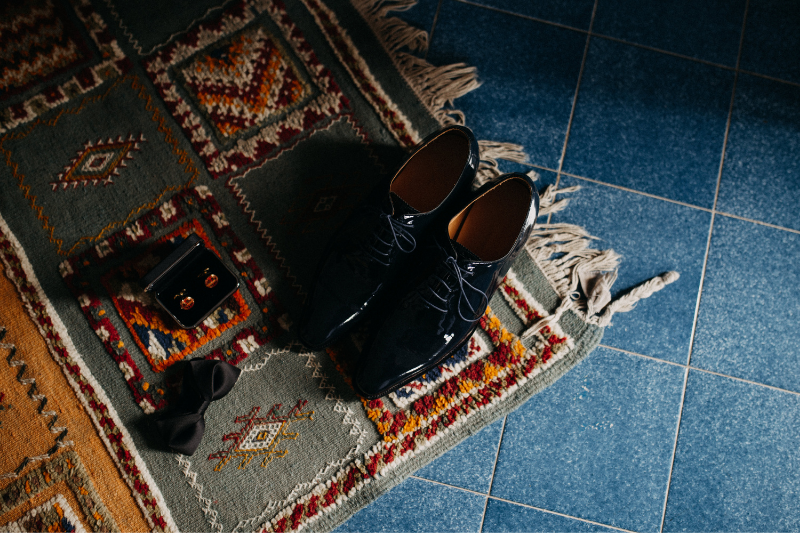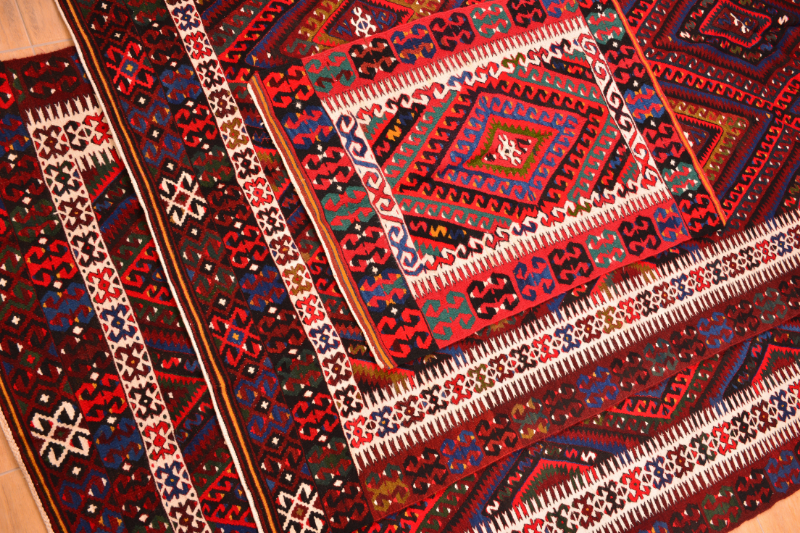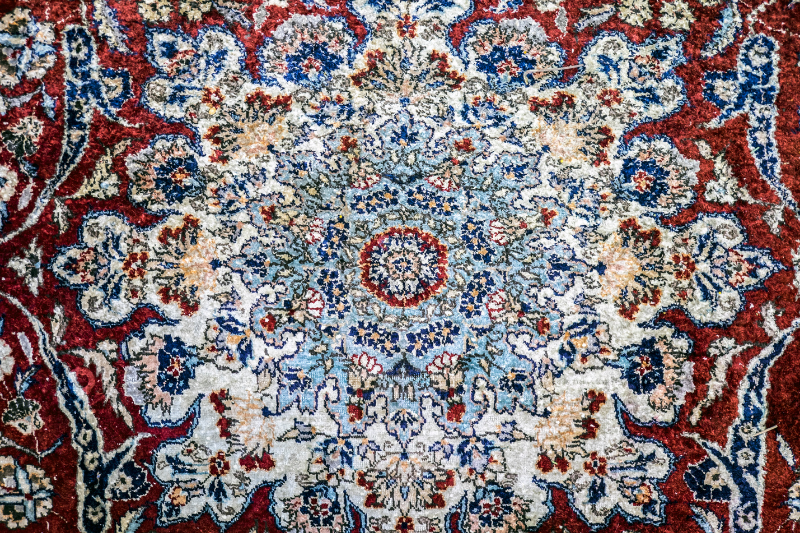Cultural Heritage: Carpet Motifs, Meanings and Characteristics

Cultural Heritage: Carpet Motifs, Meanings and Characteristics
Culture can be defined as the existence of thought and art that ensures the unity of thought and life of a society. Many of the culture’s legacies have been carried over into the present, even as generations pass and lifestyles change. Carpet patterns are one of the cultural elements that have been preserved from Anatolian civilizations to this day. There are two basic concepts in weaving. These concepts:
- weft threads
- It is in the form of warp threads.
Basically, carpets are a type of weft weaving in which the warp threads are hidden by passing the weft threads through the warp threads from one bottom to the other and compressing them. Rugs are colorful and embroidered products that are woven thinner and hairless than carpets.
The main reason carpets are colorful and embroidered is because in our culture, carpets are viewed as a source of verbal communication. Lovers can share their love for each other by weaving carpet motifs and use carpet motifs to commemorate their grief and pain after each other’s death.
Tips on the world of kilim motifs
Weaving enjoyed great popularity as a craft during the period when it served as a source of income. Carpet motifs, especially those embroidered by master weavers, transport past pains, loves, longings, hopes, separations and many other stories into the present.
Although carpets are an item known to everyone according to the Anatolian civilizations, they are called by different names. Carpet motifs, colors and composition passed down as cultural heritage are passed on unchanged to future generations.
Carpets are much more than just a household item, especially in regions where Anatolian culture is cultivated. Women who express their longing for their fathers, husbands and children who went to war on carpets rather than putting them on paper are the most profound examples.
The longing of young girls separated from their families also flowed into the loom. The Anatolian geography in which the carpet-making culture began hosted different societies at different times. This allowed the carpets and rug motifs whose meanings we will examine to be variable and creative.

What are kilim motifs and patterns? Kilim motifs with their meaning
Symbols are the common language of expression used by people in their daily lives and throughout history. Motifs can be explained as cultural signs. Motifs are the ambassadors who make it possible to transport culture. Motifs are initially used for a cultural element that is intended to endure and be passed down through generations. Motifs are one of the factors that create a direct connection between art and everyday life.
Incorporating ethnic symbols and motifs into your living spaces such as living room, bedroom and study increases your energy and calms your soul. It helps you better understand the work you do. You can create an ethnic atmosphere by placing a hand-woven carpet with predominantly red colors on the floor of your study, where you prefer dark wood study furniture.
Especially when vintage-style furniture and ethnic patterns come together, a historical atmosphere is created in your study. When choosing carpets and rugs for the floor of your study and other rooms, you should know the meaning of the carpet motifs and symbols so that you can choose the carpet with the right meaning.
There are certain motifs that can be worn on carpets that come from different cultures, especially Anatolian influences. These carpet motifs and their meaning:
- animal motifs; Since ancient times, people have believed that by imitating wild and dangerous animals or by weaving in pieces of fur and skin, the strength and power of these animals was transferred to them and in this way they were protected. Although the bird motif is the most commonly used animal motif, the weaver also incorporates dragon, scorpion, snake, swallowtail, wolf print and insect motifs into the textiles.
- floral motifs; Tree, leaf, flower and fruit motifs are used.
- Geometric motifs; It is the most preferred type of motif due to its ease of weaving. The most common shapes are triangle, square, rectangle and diamond.
- Mixed motifs; Medallion, badge, hook, column text, letter, vase etc. is used.
- Symbolic motifs; These are motifs that symbolize the weaver’s emotions and forces of nature. This group includes bird, tree of life, hand, comb, jug, lamp etc. enters.
It will help you better understand where the artisans sitting at the loom get their inspiration from and what they want to express. Importance of Carpet Patterns is as follows:
1) Probable motive: The Elibelinde motif is the symbol of femininity and motherhood. It symbolizes not only motherhood and fertility, but also happiness, abundance, happiness, joy and joy.

2) Tree of Life motif: It represents the axis of the world that connects the three parts of the universe: the subterranean world in which it takes root, the world of people towards which it directs its trunk, and the celestial sphere to which it spreads its branches upside down The tree, whose roots lie in the celestial sphere, emphasizes that the universe was created by God and its trunk and branches point towards the earth.

3) Pitcher motif: The jug is known to have been widely used in pre-Islamic Eastern cultures, particularly in religious circles. “The offering of holy water to the gods in the temples, the washing of the idols, the cleaning of the temple and the sprinkling of fragrant liquids were all done with jugs.” As can be seen from this, the jug and its shape occupy a special position in terms of its area of use.

4) Ram Horn Motif: The ram horn motif, which symbolizes heroism, strength and bravery, is also known to be used as a symbol of fertility. It was widespread throughout Anatolia.

5) Scorpion Motif: Since people are afraid of poison, they believe that they protect themselves by wearing scorpion-shaped jewelry made of various materials or the scorpion’s tail on their bodies. Scorpion motifs embroidered on woven fabrics are also an application for the same protective purpose.

6) Bird motif: The bird, whose importance increased throughout human history by attracting people’s attention, occupies an important material and spiritual place in the life of the Anatolian population. The bird motif has different meanings in weavings. It is understood that it is used as a symbol in situations such as death, beauty, good luck, bad luck, power, power, analogy and exaltation.

What are Anatolian motifs and Turkish carpet motifs?
Carpet motifs should be nothing more than an art element. Art is the link that explains to the audience what the artist wants to say. The Anatolian carpet motifs used in carpets have also been a vehicle for what the people of the same time wanted to express throughout history and have continued to this day.
Turkish carpet motifs share much more with you than you think. These themes and the traditional carpet and rug motifs on which these themes are covered are as follows:
- Love-marriage-affection (breast, comb, love union, hair tie, earring)
- Abundance (Pisces, Star, Pitchfork, Pitchfork, Abundance, Hand in Hand, Tree of Life, Upright Leaf, Rose Petal, Ram’s Horn, Dragon)
- Unity and Solidarity (Çengel, bukağı)
- Fertility-reproduction (in hand) power-strength-bravery (eagle, dragon, ram horns)
- Death (scorpion, chest, tombstone, bird)
- Worship and Adoration (Post, Hand, Mihrab)
- Fear protection (scorpion, snake, fox ear, wolf mouth)
- Evil Eye Good Luck Amulet (Eye, Amulet, Crow’s Feet, Hand Finger Comb, Cross, Bird, Foot, Stitched Leaf)
- Continuity of Life-Immortality-Universe-Eternity-Continuity (Wheel of Fortune, Love Union, Tree of Life, Idol, Water)
- Brightness-Cleanliness (land, vase, water)
- Happiness (snake, star, hand in hand, bird, rose petal)
- Healing (dragon, snake)
- Heaven (land, altar, vase, rose petal)
- Sun (eagle, cross)
- Illness-Pain-Sorrow (Scorpio)
- Stamp (ram’s horn, houndstooth, hook)

How do you choose the right carpet for your living space?
Once you’ve learned and bagged the rug motifs and their meaning, it’s time to place the right rug in your living space. Unfortunately, carpet motifs alone are not decisive when choosing a carpet. Here are some things you should pay attention to when choosing a rug for your living space.
Choose a rug of the right size
A small rug standing in the middle of a large room doesn’t look particularly nice. In the exact opposite case it may be possible. Choosing carpets that cover the entire room and leave no space is also not right. After placing the carpet on the floor, ideally leave 10 cm of space on the sides. Choosing the right size rug will also make cleaning easier.

Capture the harmony between the main color of the carpet and your furniture
The design of handwoven carpets generally consists of woven motifs on one main color. There are four main effects when paying attention to color when adding a rug to your living space. This; Freshness, warmth, cold and lukewarmness. With these effects in mind, you should determine the area or furniture you want to highlight in your room. This decision will impact your decisions.
If you choose a rug for a large room, the dark rug you like will, when it enters your home, take on a color intensity that comes from spreading over a large area.
If you have limited space, your curtains and the carpet on the floor should be chosen in light colors. If the overall decoration of your rooms is harmonious, your carpets should be chosen harmoniously to ensure integrity.
If you want to incorporate carpet motifs, which occupy an important place in Anatolian culture and have become an important part of cultural heritage, into your daily life, you can start by learning the mysterious meanings of the motifs.





